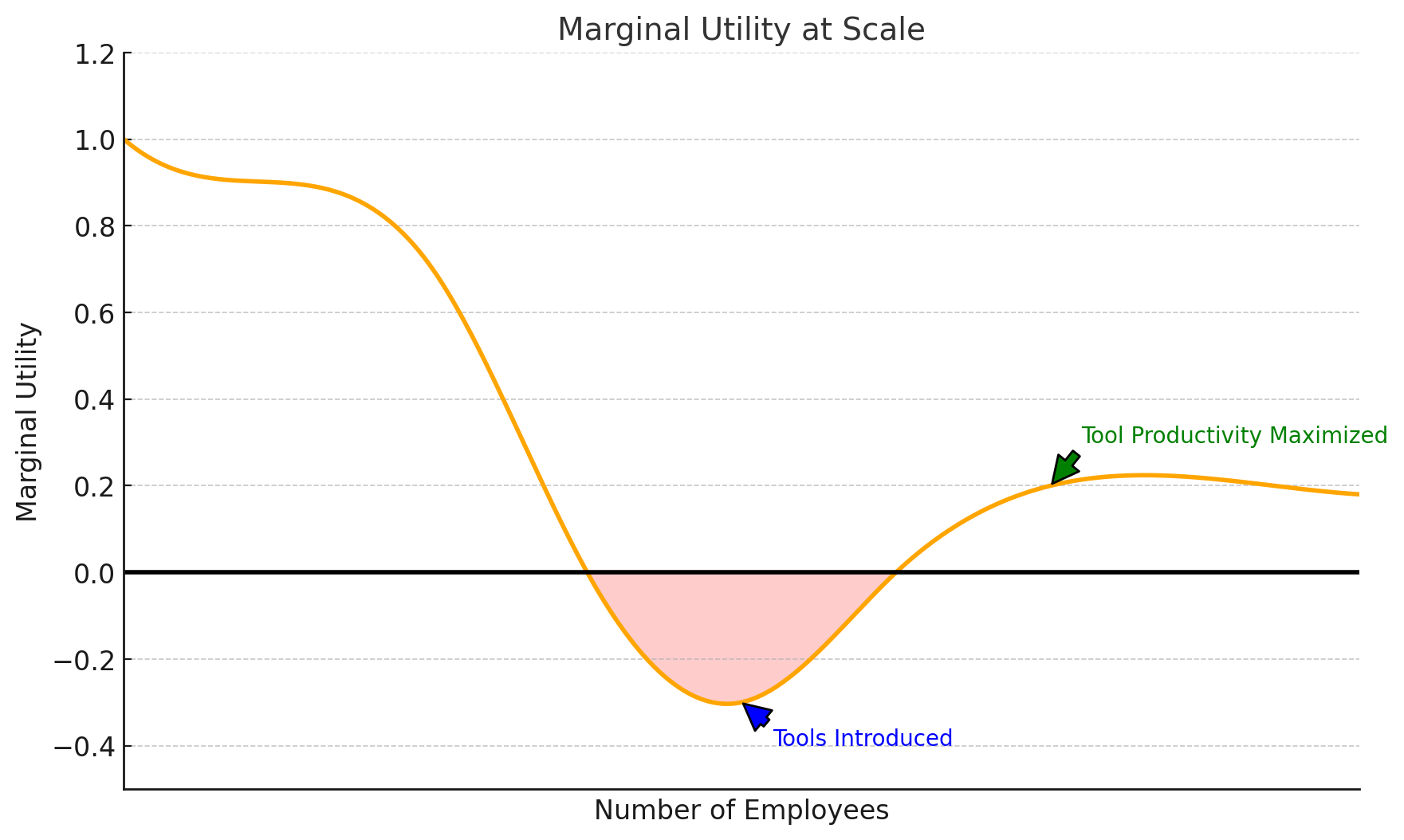The Power of Abandonment
I abandoned nearly everything I owned when I moved to the West Coast. It was a week after the George Floyd incident, America was in the most turmoil that I had seen, and I called an audible. I took out my life savings in a cashiers check, got in my car, and started driving. My only housing prospect was with a guy I emailed on Craigslist who wanted to meet in person, and I had nothing better to do during the Pandemic.
Originally, I had a plan. Move to the city, get roommates, get saturated in the SF tech scene. A lot of smart, successful people have plans. But, I ultimately abandoned it, and my outcome was far better than any thing I could have planned for. In 2019, I never imagined I would wind up at the cusp of the re-industrializatjon movement. If it wasn’t for abandonment, I would probably be slaving away in the Midwest at some remote job, dreaming of the day I can retire.
I’ve come to realize that the future belongs to those who are willing to throw out their plans and embrace chaos. In the information era, our society is becoming increasingly obsessed with organization, habits, and maximizing metrics. There is no doubt that planning and optimization works, but we’ve reached the point where we’ve stripped away the creativity that brings novel value to our world. Today, people are drowning in systems and are losing their innovating edge as they grow. Society needs to break free from this structure of maximizing profit margins, take bold risks, and rediscover the power of abandonment - an untamed creativity that can drive real growth.
The Systemization of Startups
The startup guy that spawned from “The Lean Startup” and “Zero to One” has become an archetype on the West Coast, where raising money is starting to feel easier than finding a new job. Doing a startup has evolved into a system, albeit a loose one. One that has stripped away a good amount of the risk and chaos that Netscape, Yahoo, and AOL went through.

I’m a huge fan of the startup ecosystem, but it is easy to see that the startup game-changers of today are nothing like what they were before the dot com bubble. SpaceX, OpenAI, Anduril, they’re all started by successful, wealthy people. We’re encouraged to think about moonshot ideas, be open to pivoting, and burn investor money for growth at all costs. It works - way better than Corporate America of the past 50 years. But at this point, are startups really the same thing they once were?
We’ve developed new processes to select the winners of the startup world. Zooming out, this is no different than how incredibly successful organizations, like NASA and IBM, made their success. The shift has changed the pipeline. What once was (academics and gov) -> (projects and corporations) is now (FAANG and VC) -> startups. While the rules to get there have changed, it’s an iteration at the end of the day.
I am all for startups being here to stay. The reality is, while it has felt like FAANG is the next generation of Corporate America, it’s being confused with startups. We are no longer relying on the government and academic pipelines for optimizing success, and depend on FAANG and private funds instead. The end result is the systemization of startups. One that is stripped of the creative gold mines they once were decades ago, replaced with optimized formulas to obsess and perfect.
Our culture is obsessed with systematic hyper-optimization. Thought leaders like Andrew Huberman and Brian Johnson have brainwashed groups that advocate for regimes like strict green goo diets and waking up every day at sunrise. Culture is upstream of the way society functions, which is evident with trends like dry january exploding in popularity and non-alcoholic menus expanding everywhere.

I’d agree that more startups and innovation is a good iteration, but there is no denying that teams hit a point of critical mass where you can no longer cowboy your way through shipping products anymore. The exact number varies greatly, but it is around Dunbar’s number, 150. We overcome this barrier with systems and routines using tools like Jira and Slack, which many would consider a necessary evil that keeps the company afloat. In reality, today’s tools are conforming us to mediocrity rather than leveraging our power. It’s like replacing a master sculptor’s hammer and chisel with a cookie-cutter mold. The mold can produce identical statues quickly, but it strips away the artistry, skill, and individuality that the sculptor brings to each unique piece.

Society can continue down this trend of optimization. Startup success rates will be better than ever, and making profitable products will seem trivial - you just have to follow the formula. But is this the innovation and value creation we need startups bringing into the world? Or are we slaving away our most elite minds in an Olympics of business, while the financial sector reaps the benefits of dollar creation instead of value creation?
Embracing Abandonment for Innovation
I’ve recently found myself obsessing over a seemingly contradictory practice - the power of abandonment. Abandonment challenges the boundaries of our structured lives and opens up options that were never previously available. Abandonment unlocks a form of innovation that many haven’t experienced since their youth: the ability to innovate and create unique value from the unknown. As a society, we generally label abandonment as carelessness or a lack of direction, but that negative connotation doesn’t diminish its potential to foster creativity and innovation.
I first stumbled upon this concept when watching an interview with Trey Anastasio of Phish. Phish is known for playing a unique setlist for every show. Trey takes a lot of pride in raising the bar every year, and I was surprised to hear how he goes about deciding what to play.
Trey spends a considerable amount of time preparing a massive list of potential songs, consulting with others and revising along the way. Then, 10 minutes before show time, he tears it up. Trey has trained himself to blank out his mind right before a show starts and play what comes to him in that moment. He says, “It’s like ritual and preparation in combination with abandonment”, and goes further to note that virtually any person you talk to whose life work exists in a state of flow probably combines these two things.
The US military does something similar. Soldiers train for Standard Operating Procedures repeatedly until it is engraved in their mind. A lot of training is incredibly structured for the sake of memorization and turning the procedures into habit. But after deployment, it is incredibly common to abandon plans and adapt to rapidly changing scenarios. The combination of both prove to be a powerful approach to both training and execution.
Whether it’s arts or war, it’s clear abandonment is around, but how can it be executed in business?
Throwing Out Designs
In the tech world, meticulous planning and design are standard practices, especially at larger, established companies. However, some of the best solutions emerge when we abandon these plans and improvise. Tesla originally planned to be more of an integrator than a full-fledged car manufacturer. The original Tesla Roadster was heavily based on the Lotus Elise.
However, it became evident that designing on top of an existing car was too difficult, and Tesla abandoned the idea, opting to make significant modifications instead. By the time they were finished, only 7% of parts were shared with the original car design.
Apple threw out their old design with a big change from their cheaper, plastic-heavy products to a more premium, metal design. The first case was the new iMac in 2007, but I remember it best with the release of the iPhone 4 a few years later. From a product and UX standpoint, everything Apple has done in the past 15 years is quite iterative in comparison, while the rest of the market has strived to conform to Apple’s winning system.

Left: The famous Linksys WRT54G (c. 2002). Right: Cisco Meraki MX68CW (c. 2018)
Ignoring Projects
Elon is famous (or infamous, depending how you look at it) for abandoning companies for months on end. If you focus on the business aspect, this approach is powerful. By revisiting the companies after months away from the day-to-day, Elon is able to get a fresh view on the state of affairs. Most recently, this led to some brash, significant layoffs at Tesla and a strong re-focus on a path forward in transition from a car company to a multi-domain company. Had Elon been involved with day-to-day operations more frequently, I don’t think the same events would have occurred.
Similarly I’ve seen abandonment happen with teams on projects. One team may specialize in rapid prototypes, then abandon the project in favor of a new one after the prototype is complete. Having a fresh set of minds offer a new vision for a path forward with the project, and can potentially uncover issues that were previously unseen or ignored.
Industry’s Push Against Abandonment
Turnover in companies have grown increasingly common, which I think is partly why there’s been a negative view associated with tribal knowledge, and a push for implementing ticket workflows for tracking work and issues. At a certain scale, some of this is a necessary evil, but we now live in a society that is increasingly obsessed with recording and logging every detail and metric possible, with the argument that we can objectively make the best decisions with the most data.
While this approach can lead mathematically to better results on paper, it does not lead to better products. The value of a data-driven approach is higher reliability and scale, not innovation and creativity. I am optimistic that society can shift back towards valuing innovation and creativity, but it will take accepting abandonment, trying new things, and going against the grain.
Now What?
Challenge yourself this week. Identify one routine or project that you’ve meticulously optimized but now feels mundane or uninspired. Take a bold step - throw it out and try something completely new. Do something that doesn’t maximize the paper stats. Abandon your script, embrace some uncertainty, and dive into the unknown. You’ll be surprised by the fresh perspectives and innovative ideas that arise when you break free from the familiar.